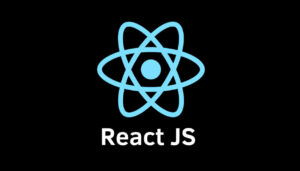Top 20 Payroll Interview Questions & Answers

Getting a job as a payroll administrator can be rewarding, but first, you will need to get past the interview to land the position.
Payroll administrators handle all of a company’s employee payment-related tasks, and this includes taxes and other deductions. Some level of human resource knowledge is also helpful here.
This article lists the top 20 payroll interview questions and their answers to help you get ready.
1. What Is Payroll Administration?
Payroll administration refers to the group of tasks that are necessary to compensate the employees of an organization for their work.
These tasks include processing employees’ wages, creating and maintaining timesheets with the employee’s pay grades, as well as any other related tasks.
2. Explain Payroll Accounting
Payroll accounting includes all the aspects of payroll management, plus the management of benefits and taxes.
This means the recording and calculation of timesheets, making payroll deductions and withholdings, transferring employee payments and withholdings, and depositing withheld taxes, insurance payments, and so on.
3. What Desirable Qualities Should A Payroll Administrator Have?
A payroll administrator should have a good eye for numbers because this helps to cut down on errors. Secondly, the person should be approachable and communicative, as the job might involve dealing with numerous employees and their issues.
Finally, the person should have a good working knowledge of payroll software, human resources, organizational skills, and labor regulations.
4. What Are Employer Paid Benefits
Employer-paid benefits are any payments, support, or contributions from an employer towards an employee’s healthcare, retirement, and insurance coverage that would not have been possible without the employee working for the employer.
Popular employer-paid benefits include:
- Health insurance
- Retirement plans
- Sick days
- Vacations
- Life insurance
- Flexible / remote work options
5. How Best Can You Manage Payroll?
Most organizations use payroll software to manage their employee’s compensation. The advantage of using software is that it improves the clerk’s efficiency, reduces errors, automates otherwise complicated accounting functions, and helps to store and manage data better.
6. How Do You Organize Your Daily Routine For Efficiency?
Payroll administration is a versatile job that requires calculations, answering employee questions, providing information, and reviewing timesheets.
This requires the use of task management software to create and manage your daily, weekly, and monthly duties. This approach helps you to make out time for answering important emails, managing the time-keeping system, and sending out checks or making deposits in time.
7. Explain CTC (Cost To Company)
Cost to the company refers to an employee’s total salary package or in other words, the total expenses that an employer makes each year for its employee.
CTC comprises the employee’s gross salary, benefits such as insurance, and contributions to savings schemes. Employees will most often not receive the full CTC amount, but they benefit from it.
8. Explain Employee Vs Contractor
An employee is a part-time or full-time worker on an employer’s payroll that receives fixed wages at fixed periods in exchange for their dedication to the employer’s organization. A contract worker, on the other hand, is independent and usually gets paid after invoicing the employer.
While contract workers have more autonomy and can bill the employer at their set rates, they are not entitled to employee benefits, such as health insurance, paid time off, retirement contributions, and so on.
9. What Are Non-taxable Income?
Non-taxable income is compensation paid to a worker or individual that is not subject to withholding taxes. Incomes that fall under this group will not be taxed by the authorities, whether you enter them on your tax return or not.
Some examples of non-taxable income include:
- Wages earned in states or jurisdictions without income tax
- Disability wages that are funded with after-tax money
- Gifts
- Employer-paid insurance
- Welfare benefits
- Child support payments
10. How Do You Deal With A Payroll Error?
This type of question is focused on checking your interpersonal skills and problem-solving abilities. While there is no straight answer to it, because errors and their ideal resolutions can vary, you must convey your ability to remain calm and sort the issues at hand.
Such an error could come from an employee reporting incorrect deductions from his paycheck, or you could discover a mistake made by a coworker. Errors are part of human nature, so you must apologize where necessary, then list the steps you would follow to reach a positive resolution of the issue. Also, consider following the department’s policy of error reporting and corrections where available.
11. List The Benefits of Automated Payroll Systems
Automating a company’s payroll processing can bring plenty of benefits. The major ones include:
- Drastic reduction in human errors
- Save time
- Easier calculation of employee wages
- Automatic data storage and access
- Easy reporting tools
- Simplified tax filings
- Security for sensitive data
12. What Are The Major Features Payroll Software Should Have?
The major features that a good payroll software should include are:
- Simple setup system
- Data management features
- Reports functionality
- Salary structures
- Integration with HR systems and other software
- Statutory compliance
- Bank deposits functionality
- Employee self-service features
Other possibly helpful features include low pricing, good security, customization, and mobile access.
13. Which Payroll Systems Do You Have Experience In?
The right answer here depends on you and your experience. Plus, you might have more luck being experienced in as many platforms as possible.
The following are some popular payroll management software:
- Quickbooks Payroll
- Gusto
- Workful
- Rippling
- Paychex Flex
- OnPay
- Xero
- Trolley
14. Explain Payroll Source Documents
Payroll source documents are documents that you need to generate an employee’s salary. It could be in paper or electronic form, as long as it shows all the necessary data.
Payroll source documents can be anything from timesheets to pay-in-slips, time recorders, invoices, banking information, tax codes, and so on.
15. How Do You Avoid Payroll Errors
Human beings are prone to error, but you can always organize your process in a way that reduces the chances of making an error to the barest minimum. To do that, you can use any of the following tips:
- Use automation where possible
- Ensure correct employee data
- Run your reports in advance, so you have enough time to check for errors
- Make a checklist that includes all the tasks you need to go through
- Go paperless where possible
- Deal with any errors immediately
16. How Familiar Are You With The FLSA?
The FLSA stands for the Fair Labor Standards act. It is the minimum payroll law that every administrator should be familiar with.
The FLSA establishes standards for record-keeping, minimum wage, overtime pay, and youth employment in the federal, state, and local job markets in the US.
17. When Should A Company Outsource Its Payroll Administration?
A company can consider outsourcing its payroll if it has lots of employee tracking to do, for example, where lots of employees work for varying amounts of time each day.
Another situation is when outsourcing can help the employer to save time and money. A third situation is when a company has a high employee turnover rate, which often means increasingly more work.
18. What’s The Best Pay Schedule For Employees?
The right answer here depends on the type of employee. For instance, employees with irregular work schedules or who get paid by the hour might prefer weekly payments. Then, there is the semi-monthly pay schedule, which is also popular among employees and payroll teams alike.
With it, employees get 24 paychecks a year, while benefits, deductions, and the administrator’s time commitment remain minimal.
19. Explain The Difference Between W2 & W4 Forms
These are two payroll forms from the American IRS. The W4 is for employees, while the W2 is for employers. Employees use the W4 to provide their employer’s payroll department with all the information they need about withholding taxes.
Employers use the W2 at the end of the year to report how much wages they paid the employee and how much tax they withheld.
20. What Are Voluntary Deductions?
Voluntary paycheck deductions are payments for programs that an employee voluntarily subscribed to. In other words, they are not mandatory deductions, so the employee must first authorize the employer before they can be deducted.
Examples of voluntary deductions include retirement plan contributions, health insurance premiums, disability plans, life insurance, certifications, tools, and so on.
Conclusion
We have reached the end of our list of top 20 payroll interview questions and answers, and you should hopefully have learned a thing or two.
Finally, keep in mind that it is still an interview. So, while learning and practicing will help you to get the right answers, your confidence and overall personality also go a long way towards helping you succeed.





